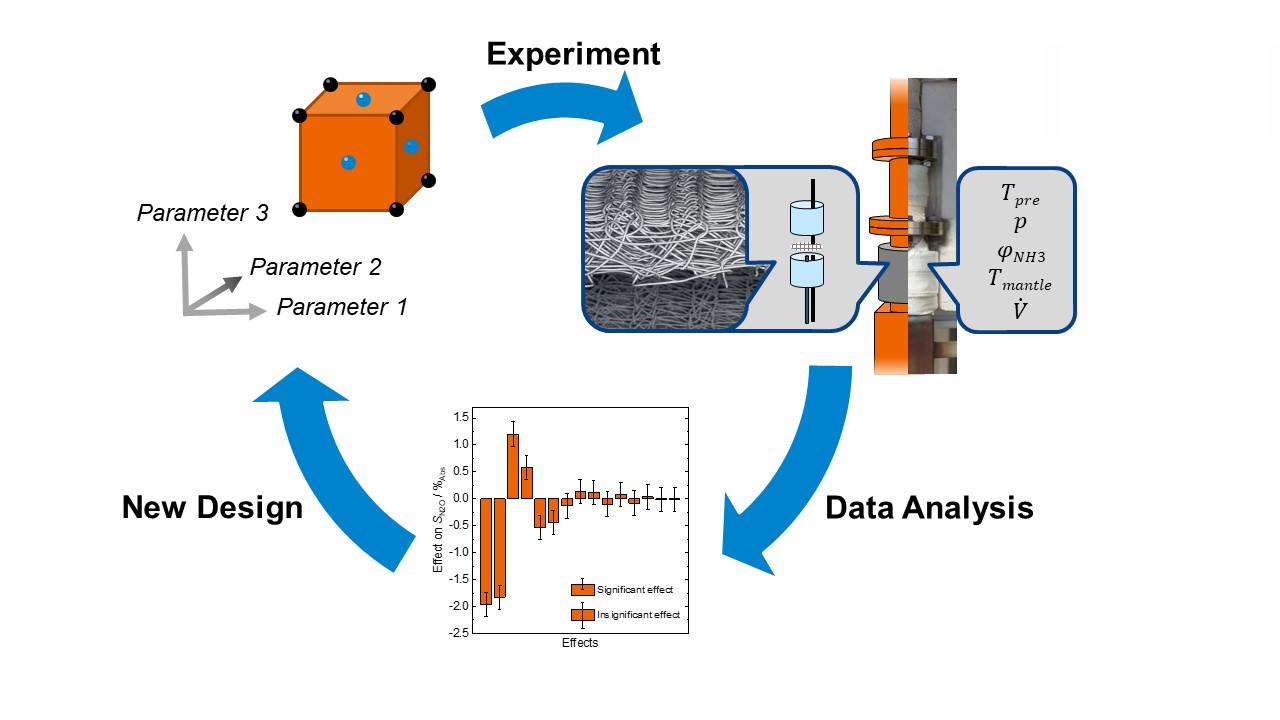The Ostwald Process for nitric acid and consecutive fertilizer production is a key technology with an annual global capacity exceeding 100 million metric tons.
[1] While the process has high selectivities for nitric oxide, the remaining selectivities to elemental nitrogen and dinitrogen oxide result in economic loss and environmental concerns.
[2,3] Most current approaches for reducing laughing gas emissions focus on postprocessing rather than lowering formation during production.
[4] Laboratory studies of the Ostwald Process require considerable technological requirements to mimic the harsh industrial conditions, and an increased level of control and reproducibility is needed to minimize statistical noise. A setup that allows for the independent setting of process parameters has been developed to extract information on linear and quadratic main effects and interaction coefficients. Through a combination of full factorial and central composite designs, the volume flow and heating mantle temperature were found to have limited influence on laughing gas selectivities, while pressure, ammonia volume fraction, and preheating temperature were identified as key parameters. The study provides insights into derived parameters and interaction effects and validates the system's ability to mimic industrial conditions. The findings are important as even small emission reductions can have a profound impact considering the global scale of the process. Improvements in the Ostwald Process can lead to economic benefits and a reduction in the emission of potent greenhouse gases and ozone-depleting substances, contributing to sustainable development.
[1] C. Ruan, X. Wang, C. Wang, L. Li, X. Liu, X. Wang, Nat. Commun. 2022, 13, 718.
[2] J. Pottbacker, S. Jakobtorweihen, A. Behnecke R. Horn, Chem. Eng. J. 2022, 439, 135350.
[3] A. Wiser, Dissertation, Technische Universität Darmstadt, 2020.
[4] M. Thiemann, E. Scheibler, K. W. Wiegand, Ullmann's encyclopedia of industrial chemistry, Wiley VCH, Weinheim, Wiley online library, 2010.


